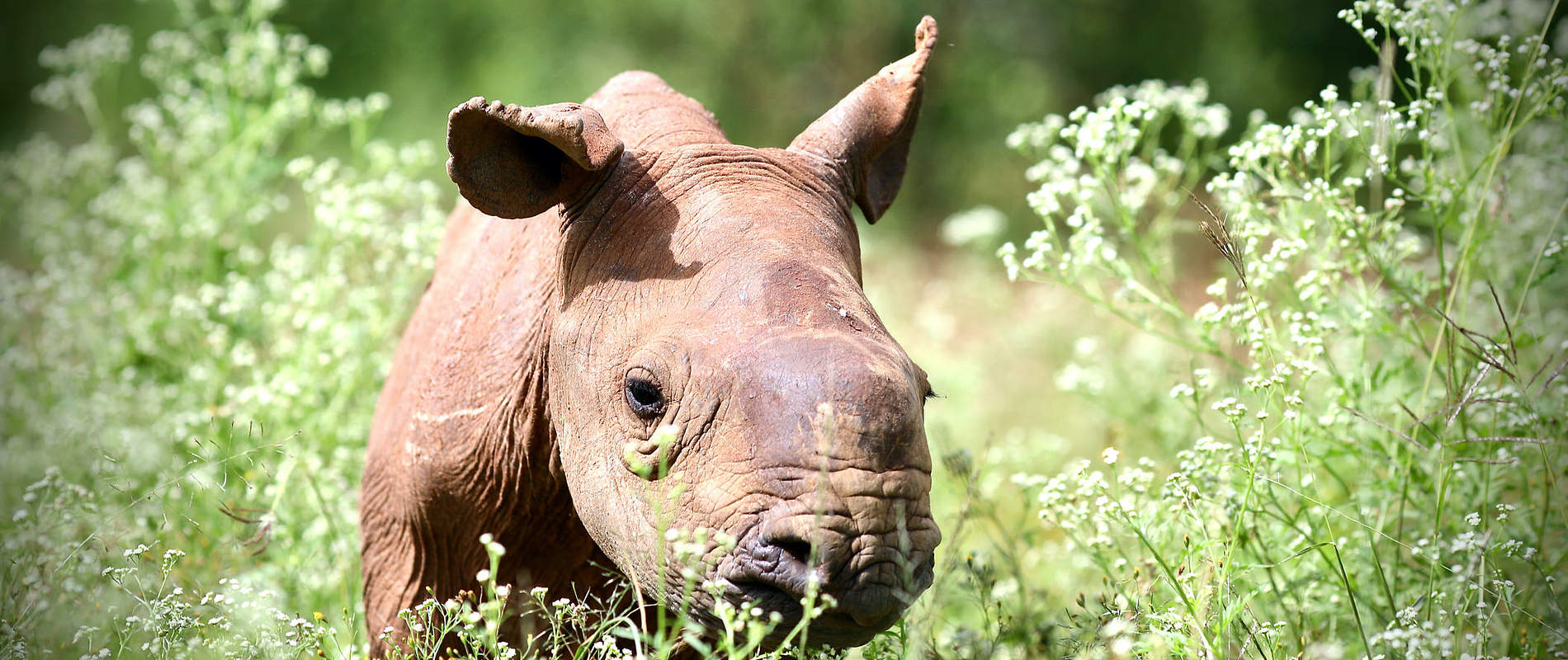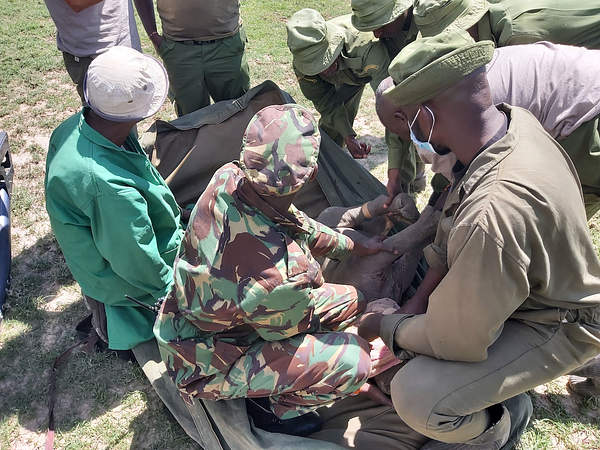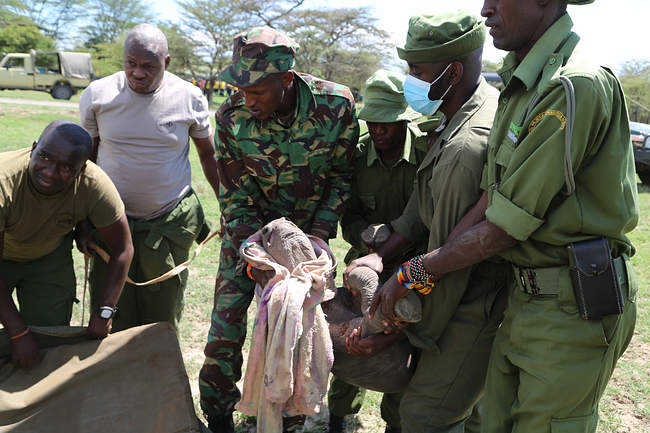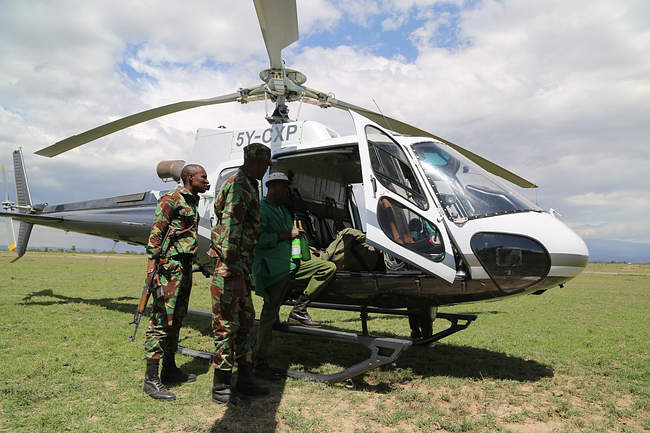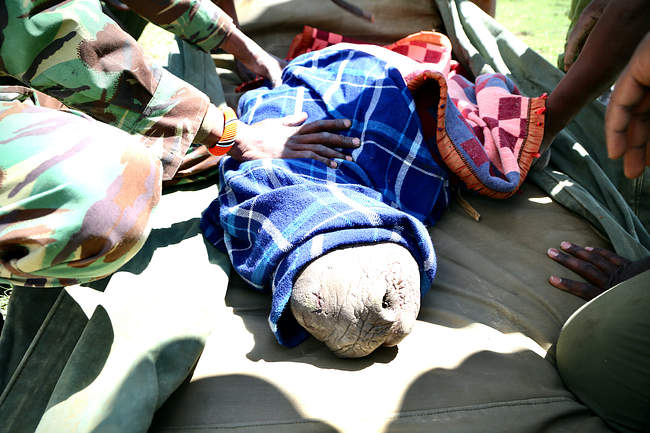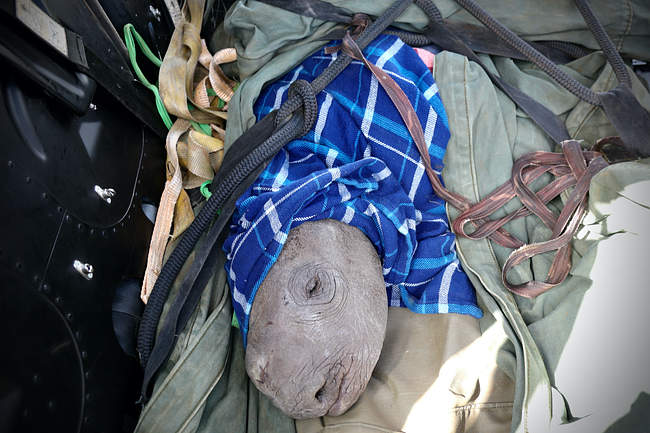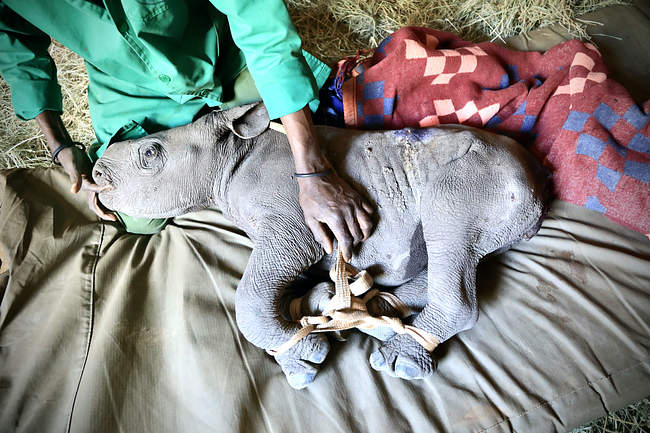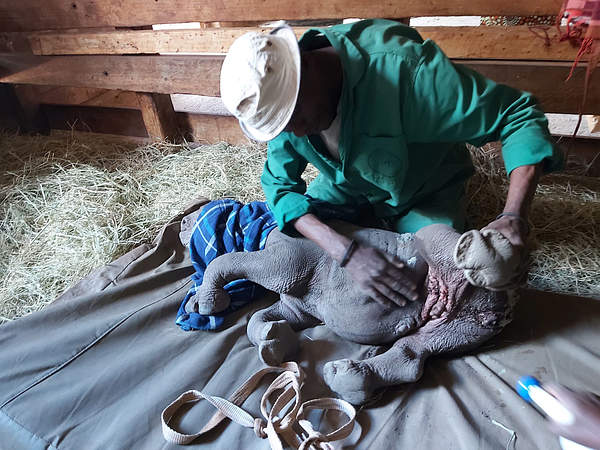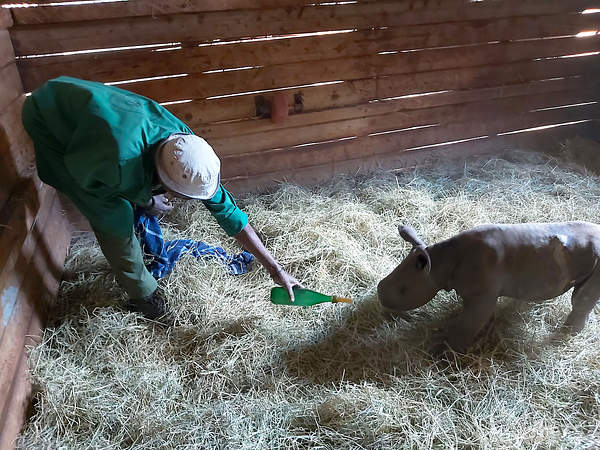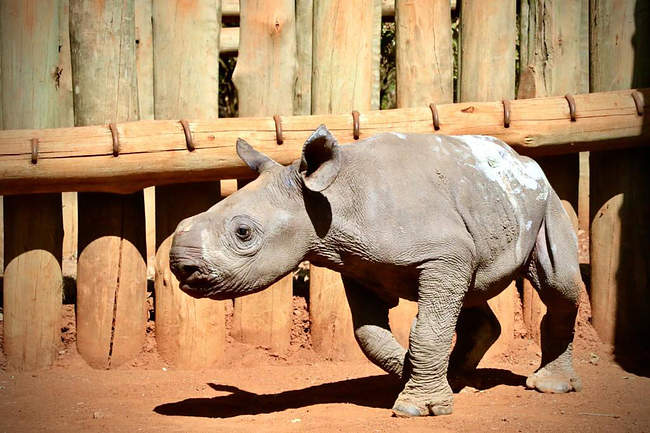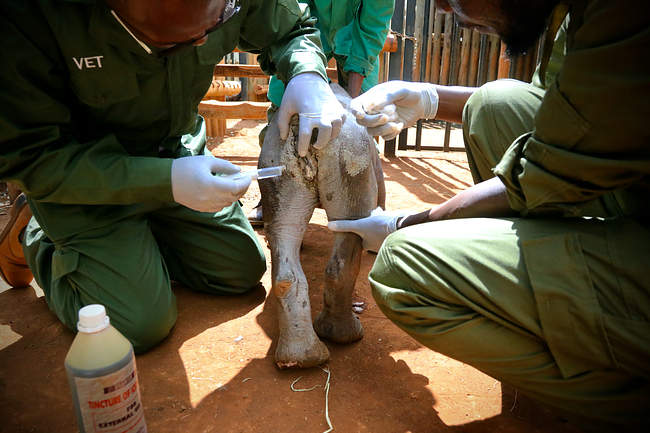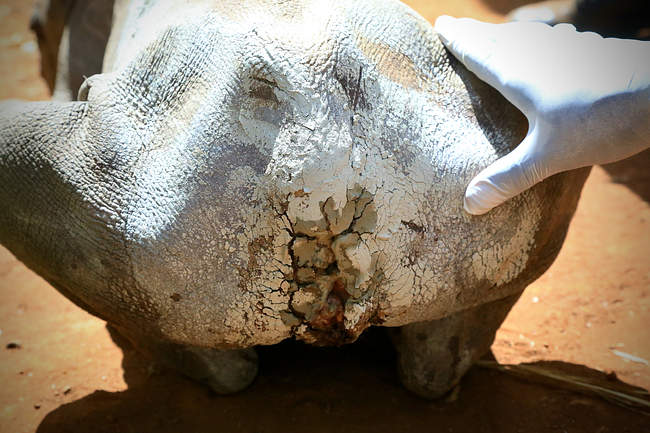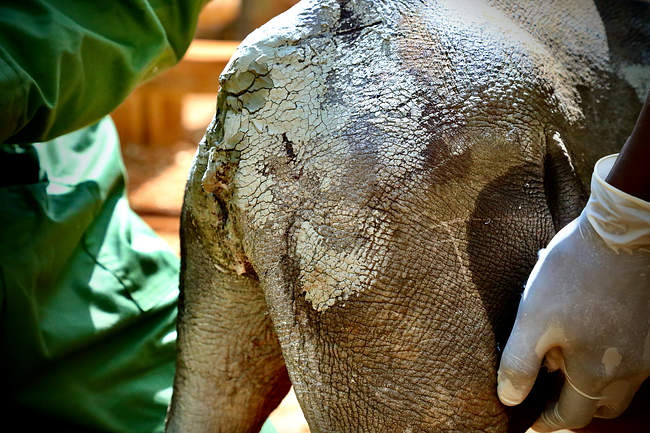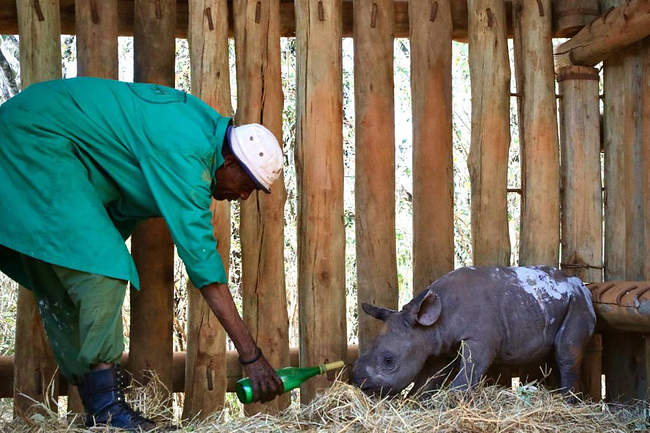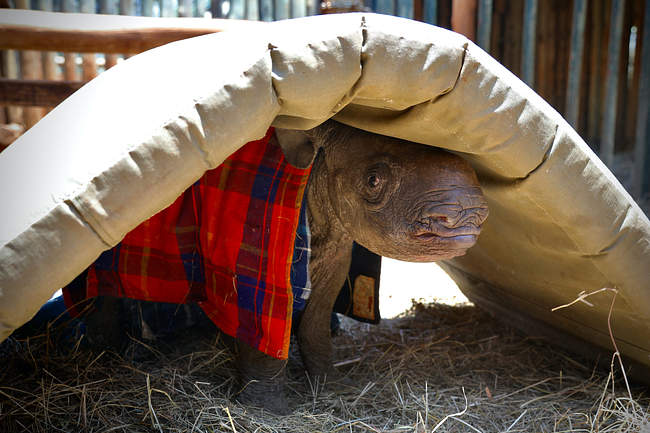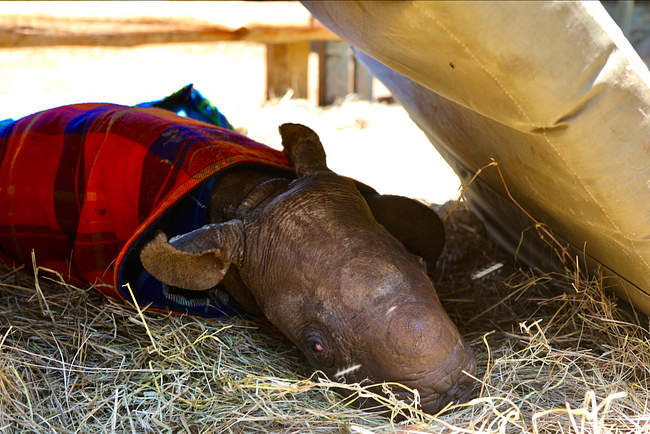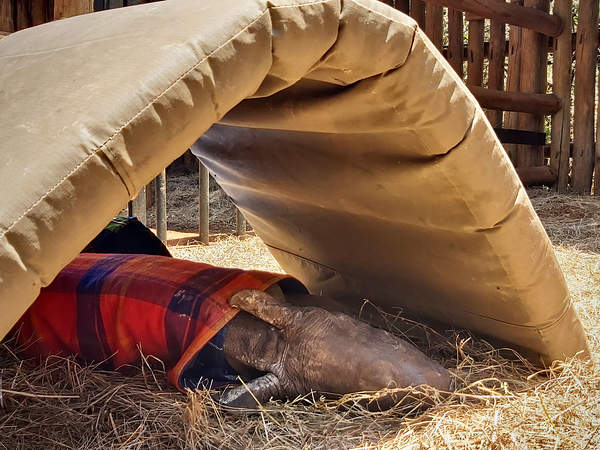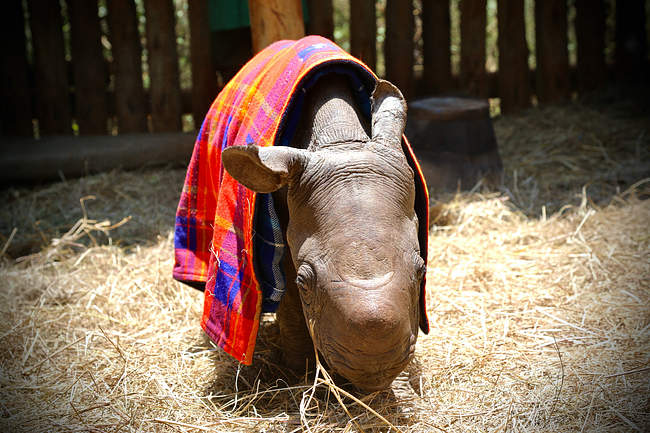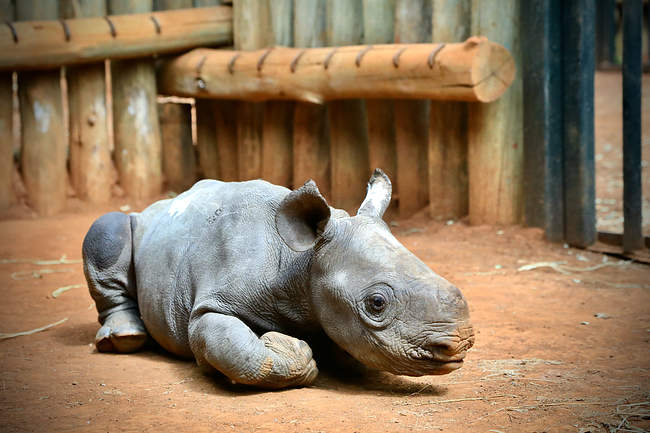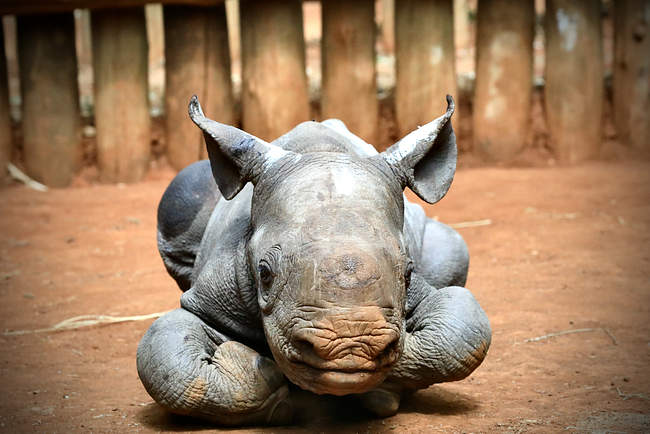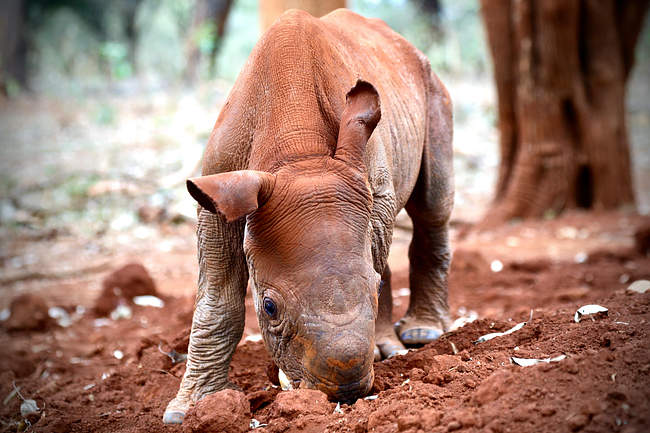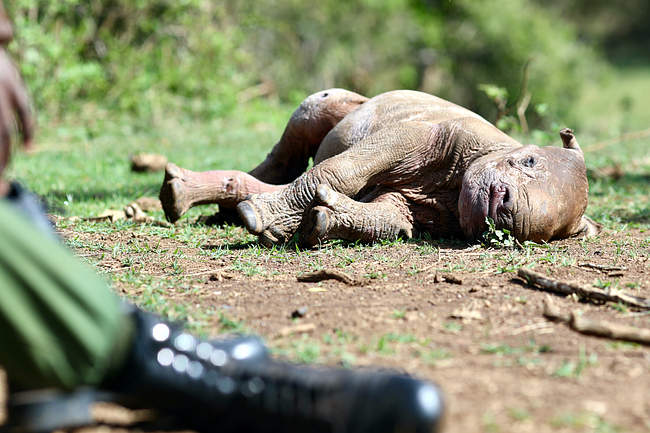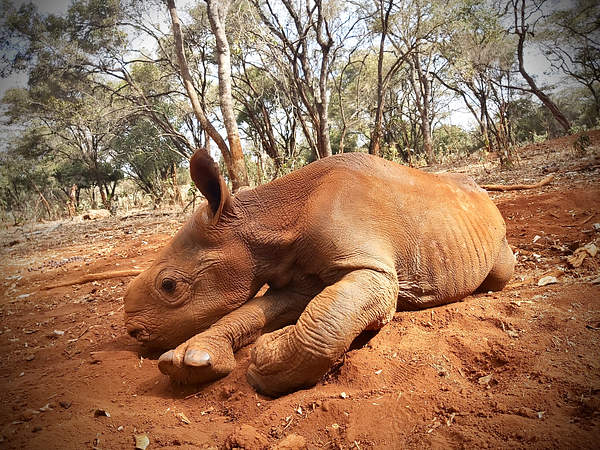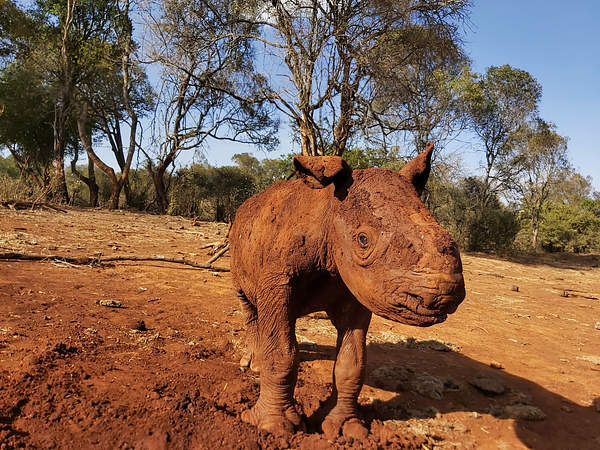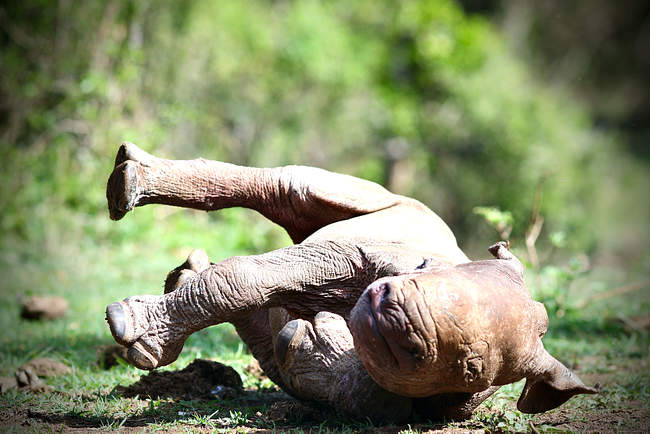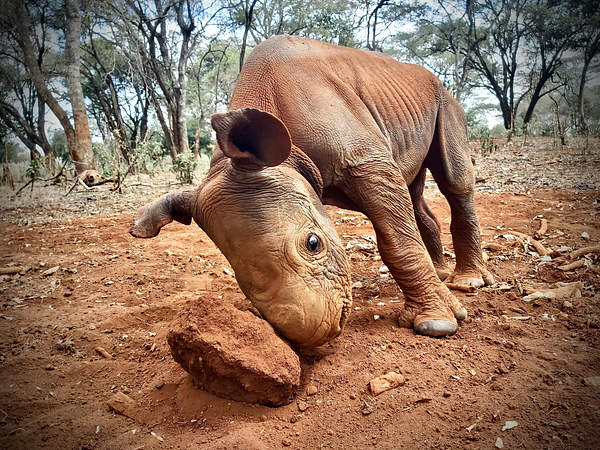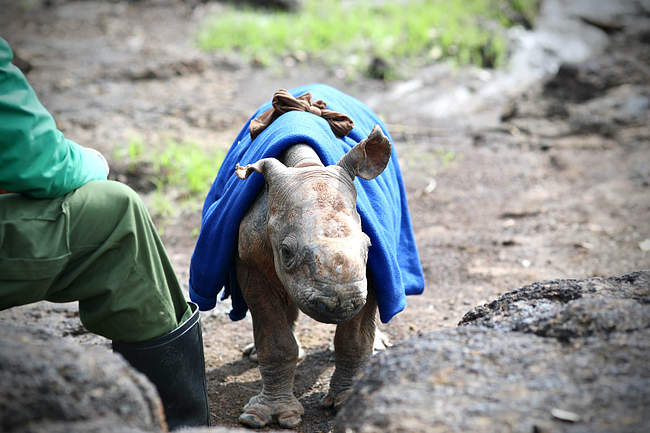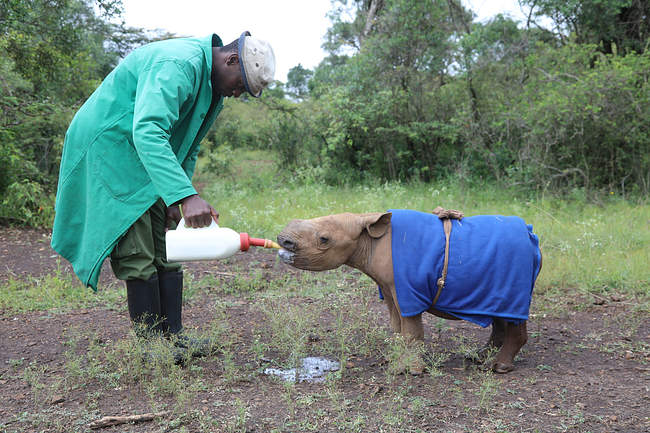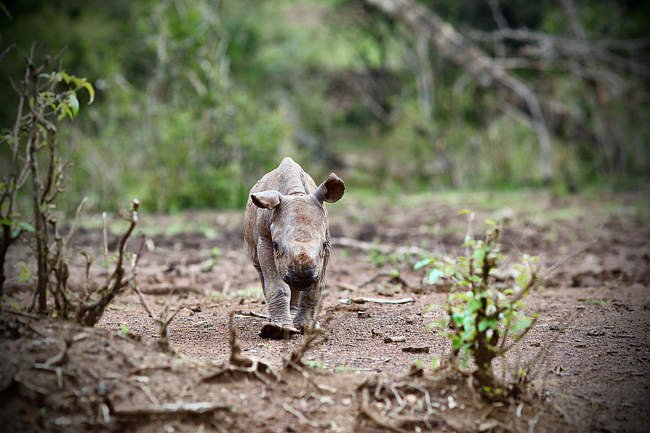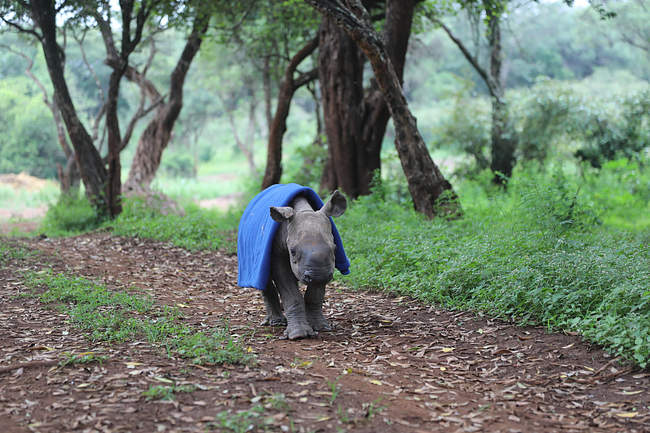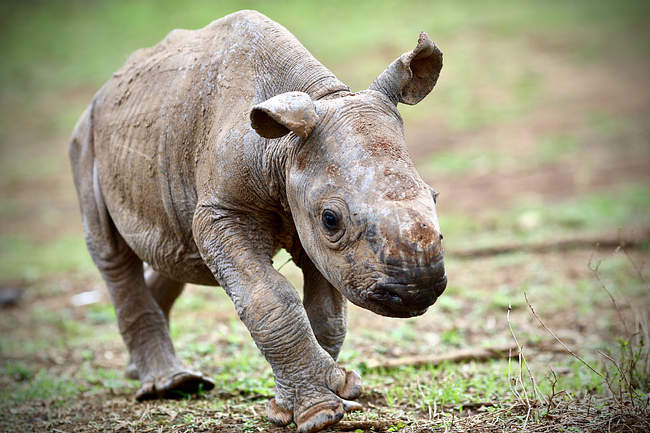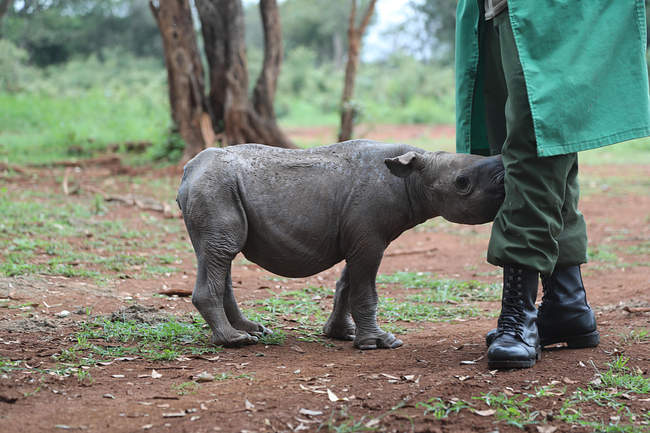In the Swahili language, Raha means joy. What better name, then, for this little rhino — joy that she survived against all odds, and joy that a precious member of Kenya’s black rhino population was saved. On the afternoon of 23rd September 2022, Ol Pejeta Conservancy scouts reported a tiny rhino calf who was in a desperate way. She was all alone, with no other rhinos in the area.
We will never know why she was abandoned at such a young age. Perhaps her mother rejected her, or perhaps she got into an altercation with another rhino and the calf was cast aside in the process.
In its prime, a rhino is one of the most formidable creatures in Africa, but a calf is terribly vulnerable to predators. In the short time she had been on her own, predators, we think jackals, had attacked Raha, mauling her with nasty injuries.
The SWT/KWS Mount Kenya Vet Unit rushed to the scene. They were confronted with an impossibly tiny calf, who was just a week old at best. The predators had done a serious number on her, adding a whole new level of urgency to her situation. She was frightened and in great distress, pain etched across her little face.
With the consent of Ol Pejeta management, KWS greenlit a rescue. Serendipitously, the SWT helicopter had just completed a maintenance check in Nairobi, so it made the short flight up to Ol Pejeta with a Keeper onboard.
It was decided that Raha would grow up at our Nairobi Nursery, where we have raised many rhinos before her. The surrounding Nairobi National Park is home to a healthy population of black rhinos, including the Nursery’s own Solio, an ex-orphan who is now living wild and a mother of two. When the time comes, many years down the line, Raha will follow in Solio's footsteps and complete the same seamless reintegration journey.
Raha’s early days at the Nursery were a real struggle. Her tail had been bitten clean off and her rear end mutilated, chewing through to the tailbone and destroying her anus. We hit a worrying stumble when she was unable to defecate for several days, but veterinary intervention kicked her nether regions back into gear.

While her body struggled to survive, Raha’s spirit never wavered. She came full of fight, charging around her stable and huffing and puffing at anyone in the vicinity. However, rhinos are very tactile creatures, so the Keepers knew how to win her heart. Ignoring the little girl’s bluster, they lavished her with lots of gentle scratchings and ear rubs. Within days, Raha was completely enamoured with them.

We have had to tread carefully with Raha, given her precarious healing process. Initially, her excursions were limited to forays onto a large bed of hay spread across a stockade, which shielded her injuries from dirt and germs. After several weeks, however, she had healed enough to expand her patch to the nearby forest.
The fierce calf who came into our care has transformed into a lamb. Swaddled in her little blanket, Raha paddles around the Nursery with great purpose. She is very inquisitive, pushing and prodding with her button nose where a horn will one day grow.
Of course, Raha isn’t the only black rhino at the Nursery. Despite being blind, Maxwell is aware of a little something in his midst. Whenever Raha bounds past his stockade, he takes note and curiously approaches his gate.
After a day of fun, Raha’s Keeper leads her back to her cosy stable. She gets a certain spring in her step when she knows its home time, looking forward to the warm bottle of milk that is waiting for her. Much like Apollo used to do, she started perching her mattress over her back like a tent, but that idiosyncrasy has waned. However, rhinos are full of peculiar habits, and we know Raha will reveal her quirks in the fullness of time.
Black rhinos have a fraught history. They once flourished across the continent, but rampant poaching decimated the species. In Kenya, the black rhino population suffered a catastrophic 98 percent decline between 1970 and 1983, dwindling from 20,000 to just 350 individuals in the span of just over a decade. And yet, hope prevails. Dedicated field conservation efforts and global support have brought rhino populations back from the brink. Today, Kenya is a stronghold for the species, home to well over 900 black rhinos. They are still a critically endangered species, but every new life serves as a beacon of hope.

Raha is one of those beacons. We recently weighed her, and she clocked in at a sturdy 40 kilograms (88 pounds). It is hard to imagine that one day, Raha will be a mother herself, living wild and bolstering the black rhino population in her own special way. It will be many years until that day comes — and in the meantime, it is our honour to raise this special little girl. Raha truly is a bundle of joy.

